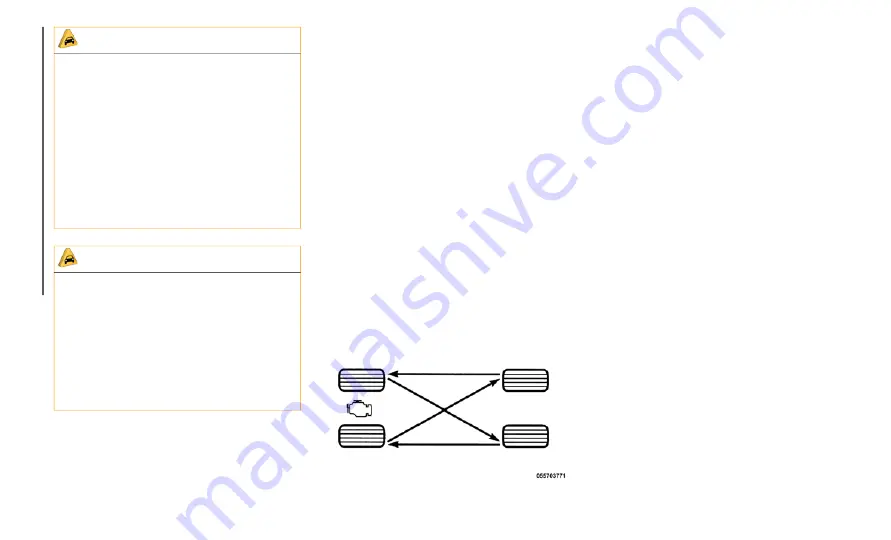
SERVICING AND MAINTENANCE
270
Tire Rotation Recommendations
The front and rear tires are subject to
different loads and stress due to steering,
maneuver and braking. For this reason they
are subject to uneven wear. To resolve this
problem, tires should be rotated at the
appropriate time.
The following rotation methods must NOT
be used with one-way unidirectional tires!
These type of tires can only be switched
from the front axle to the rear axle and vice
versa, keeping them on the same side of
the vehicle.
Rotate one-way unidirectional tires and
radial tires that have an asymmetrical
tread pattern only from front to rear, not
from side to side. Tire performance will be
reduced if rotated from side to side.
Tire rotation means moving the wheels to a
different position, with respect to the
vehicle. During rotation, inspect tires for
correct balance.
Rotation Diagram
The single wheel will therefore operate on a
different axle and, where possible, on the
opposite side of the vehicle.
NOTE:
Rotate tires periodically. Irregular tire
wear is dangerous. To equalize tread wear
for maintaining good performance in
handling and braking, rotate the tires
every 6,200
miles (10,000
km), or sooner
if irregular wear develops.
To equalize tread wear, rotate the tires
every 7,500
miles (12,000
km) at the
latest or sooner if irregular wear develops.
FCA recommends to rotate every
5,000
miles (8,000
km) to help increase
tire life and distribute wear more evenly.
Because your vehicle is not equipped with
a spare tire, you cannot do a tire rotation
safely with the jack that may come with
your vehicle if so equipped. Contact an
authorized dealer for tire rotation.
Do not drive for a prolonged period on
dry pavement.
Observe the traction device manufac
-
turer’s instructions on the method of
installation, operating speed, and condi
-
tions for use. Always use the suggested
operating speed of the device manufac
-
turer’s if it is less than 30
mph (48
km/h).
Do not use traction devices on a compact
spare tire.
CAUTION!
Using snow chains with tires with
non-original dimensions may damage
the vehicle.
Using different size or type (M+S, snow,
etc.) tires between front and rear axle
may adversely affect vehicle driveability,
with the risk of losing control of the
vehicle and resulting accidents.
CAUTION! (Continued)
















































